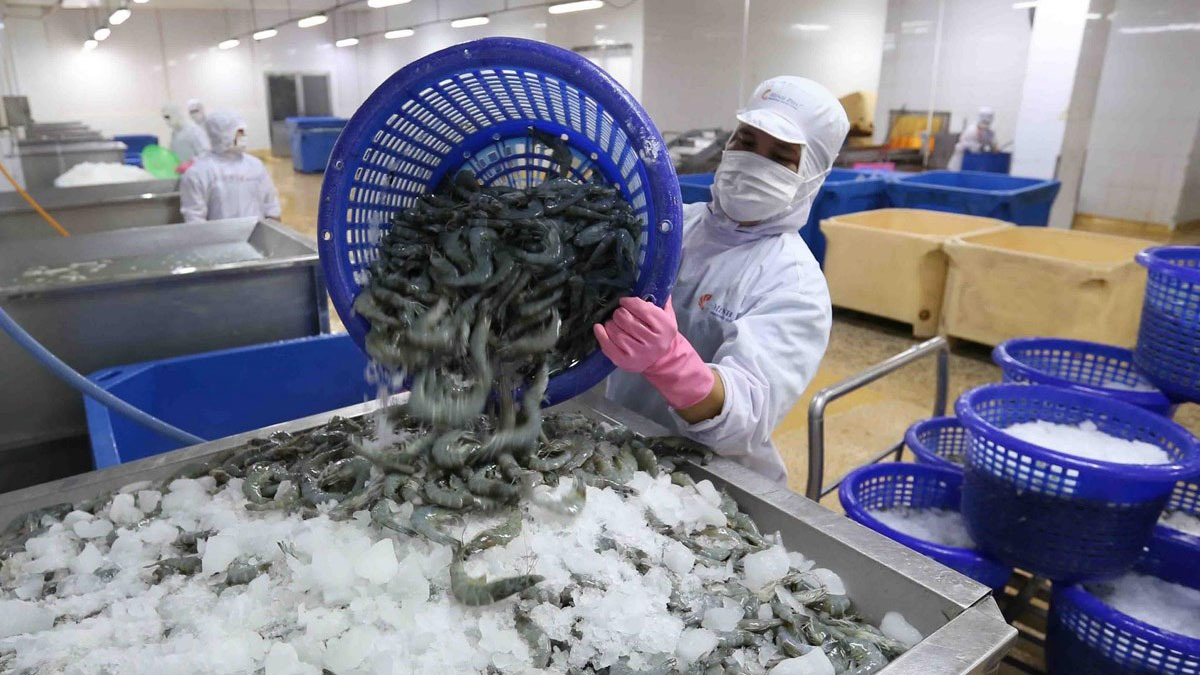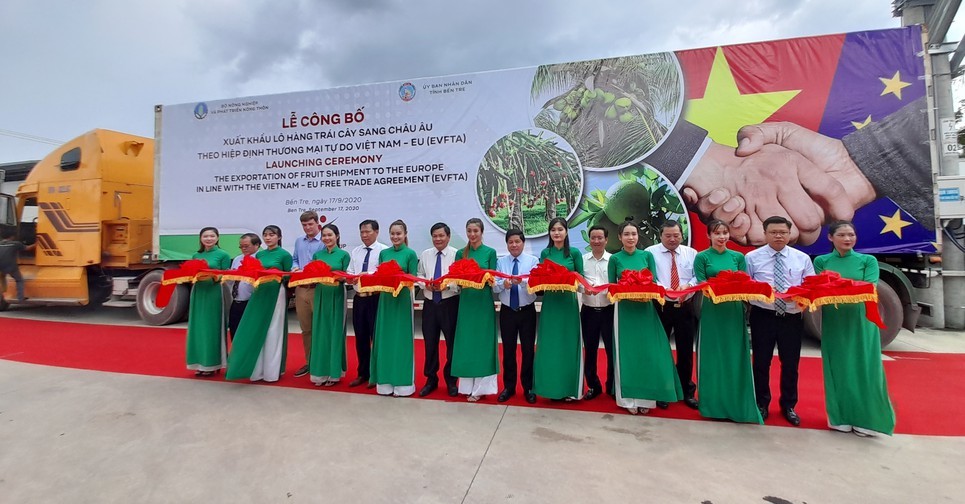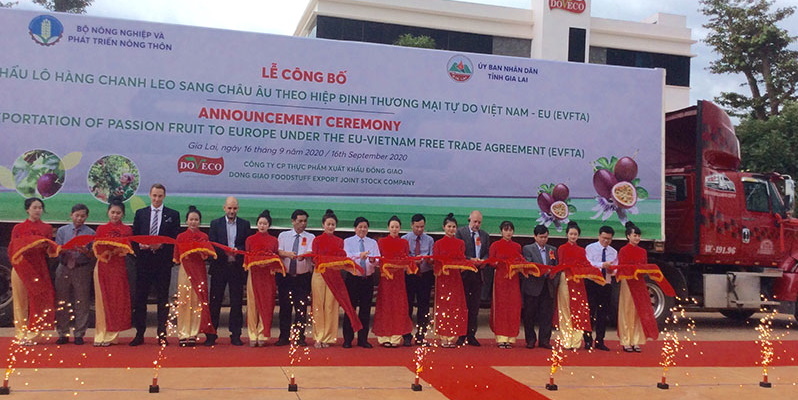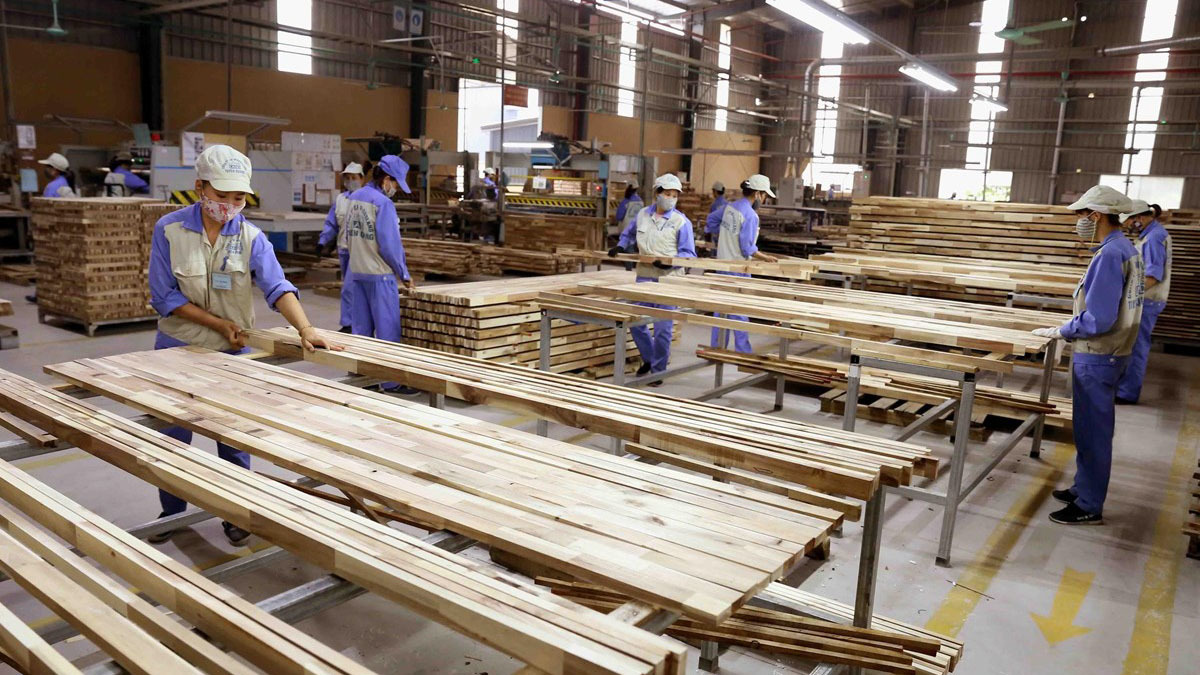Increase export
The operation of the EU-Vietnam Free Trade Agreement (EVFTA) since early August 2020 has created huge opportunities for Vietnamese exports, helping diversify markets and export more goods, particularly Vietnam’s major export products such as agricultural products, seafood, wood products, garments and textiles, footwear and electronics.
According to the Ministry of Industry and Trade (MOIT), Vietnam has taken advantage of tariff preferences in its FTAs, including the EVFTA, in order to expand the country’s export markets.
Nearly 15,000 sets of certificates of origin (C/O) of the EUR.1 form were granted to Vietnamese products, worth a total of US$700 million, allowing them to export to 28 EU countries, two months since the coming into effect of the EVFTA.
The items granted C/Os of the EUR.1 form are mainly in relation to footwear, seafood, plastic products, coffee, textiles, bags, suitcases, vegetables, rattan and bamboo products, agricultural products and electronic products, amongst others.
 |
|
Seafood is one of Vietnam's main exports to the EU. (Photo: VNA)
 |
Most import markets are countries with seaports and transshipment centres in the EU including Belgium, Germany, Netherlands, France, and the UK. In particular, many shipments have arrived in the EU market, been cleared and are enjoying preferential treatment.
Phan Van Chinh, Director of the Import-Export Department under the Ministry of Industry and Trade said that the total import and export revenue of Vietnamese goods reached US$50.4 billion in August, including US$27.7 billion worth of export revenue, up 11.4%.
Meanwhile, total import and export revenue in the January-August period was posted at US$336.92 billion, including US$175.36 billion worth of export revenue, up 2.3% over the same period last year.

 |
|
The ceremony to launch the exportation of Ben Tre's coconuts, pomelos and dragon fruits to the EU under the EVFTA (Photo: Tien Phong)
|
Vietnam also reported a trade surplus of US$13.5 billion in eight months, nearly 2.5 times higher the same period in 2019.
Notably, export revenue in August reached its highest monthly level in 2020.
In August alone, Vietnam’s export revenue to the EU market reached US$3.25 billion, up 4.65% compared to July and an increase of 4.2% over the same period last year. Vietnam’s export revenue to the EU market continued to soar in September with an increase of 14.4% over the corresponding period in 2019.
Many Vietnamese export products have witnessed positive changes in the EU market in the two-month implementation period of the EVFTA. Specifically, Vietnam’s export of seafood products in August and September increased by 10% compared to July while export revenue to the EU market increased by 1.7% over the same period in 2019.
In particular, the shrimp export in August expanded by 15.7% over the same period last year, also the highest growth since earlier this year.
Besides seafood, Vietnamese rice exported to the EU also showed positive signs as prices of rice exports to the EU market increased by US$80-200 per tonne compared to before the coming into effect of the EVFTA. For the first time, export prices of Vietnamese rice hit a record high of over US$1,000 per tonne.
The first batch of 100 tonnes of Vietnam-grown passion fruit was also shipped to Europe on September 16 under the EVFTA by the Dong Giao Foodstuff Export Joint Stock Company.
Ben Tre province also announced the export of its first batch of fruit to the EU under the EVFTA on September 17. Accordingly, the Vina T&T Group exported one container of 20,000 fresh coconuts by sea and three tonnes of dragon fruit by air to the EU market.
Vietnamese agricultural products exported to the EU market in August grew by 15-17% compared to July.
According to Tran Dinh Luan, Director General of the Directorate of Fisheries under the Ministry of Agriculture and Rural Development, the EVFTA has created opportunities for Vietnamese goods to trade at lower prices when exporting to the EU market, helping improve competitiveness over goods without the benefits of an FTA with the EU.
 |
|
The ceremony to ship the first batch of Vietnam-grown passion fruit to EU under the EVFTA (Photo: Nhan Dan)
 |
Vietnam has advantages in production and export of agricultural, forestry and aquatic products while the EU has great demand for these items with import value accounting for 8.4% of the total annual import value. This promises to make further room for Vietnamese agricultural exports to the EU market.
In addition, many other products such as telephones and components, machinery, equipment and spare parts, textiles, footwear, seafood, furniture, and coffee are also expected to increase their export turnover to this market in the future.
These initial results are said to be positive in the context that there remain difficulties due to the COVID-19 pandemic and the agreement is still very new to most enterprises.
According to the MOIT, the EVFTA is expected to increase Vietnam’s export revenue to the EU by 40% in 2025, opening up huge opportunities for Vietnamese exports.
Great opportunities ahead
 |
|
Wood processors are hoping for more orders from European countries in the remainder of 2020. (Photo: VNA)
|
Many of Vietnam’s key export products are expected to benefit by the end of this year thanks to the EVFTA. Regarding shrimp products, Tran Dinh Luan said that shrimp is one of the key export products of Vietnam to the EU. Right after the EVFTA took effect, the export tax on some Vietnamese shrimp products to the EU was cut to 0% including on frozen tiger shrimp.
Shrimp exports to the EU in August 2020 increased by about 20% compared to August 2019. It is forecast that Vietnam's shrimp exports to the EU will continue to increase by year’s end although the growth rate is not quite as high due to the impact of the COVID-19 pandemic. Thanks to the tax advantage of Vietnamese shrimp, EU importers are also seeking more supply from Vietnam.
Regarding leather and footwear, the EVFTA is considered to be the biggest driver for the industry's growth, in the context that the industry will continue to face difficulties due to its heavy dependence on America and Europe’s ability to control the pandemic.
To be able to take advantage of the EVFTA in order to increase exports, many enterprises in the footwear industry have made plans on the restructuring of their apparatus, factory infrastructure and raw materials to meet the commitments of the agreement while improving product quality.
Phan Thi Thanh Xuan, General Secretary of the Vietnam Leather, Footwear and Handbag Association, said that the EU is the traditional market of the Vietnamese leather and footwear industry, accounting for nearly 30% of Vietnam’s leather and footwear export turnover, equivalent to nearly US$6 billion each year.
"We expect that the coming into effect of the EVFTA will further promote the export of Vietnamese footwear to this market, helping offset the loss of exports during the first months of the year,” Xuan said.
Similarly, enterprises from the wood processing and production industry also hope for better control of the pandemic at established markets and expect more export orders from EVFTA member countries in the remaining months of this year.
Despite the initially positive signals, it must be stated that the EU is not an easy market, and businesses must have a serious and methodical investment plan if they wish to conquer this market.
Deputy Minister of Industry and Trade Hoang Quoc Vuong noted that Vietnamese businesses should not consider the EVFTA a "lifesaver", but consider incentives from the agreement as a support factor. The most important issue is the internal strength and the constant effort of enterprises.
Accordingly, businesses need to change their mindset and global approach and proactively improve their internal production capacity and ability to participate in international trade in order to take advantage of the EVFTA and stand firm in the international marketplace.
The MOIT emphasised that from now until the end of the year, the ministry will continue to disseminate information on the trade in goods, trade in services, investment, import tax elimination, and other commitments under the EVFTA to improve the understanding of people and businesses about the agreement, thereby increasing the benefits gained from the agreement. Nhan Dan

‘EVFTA highway’ now open, orders pouring in
More and more Vietnamese businesses can satisfy the requirements to export products to the EU, one of the world’s choosiest markets.